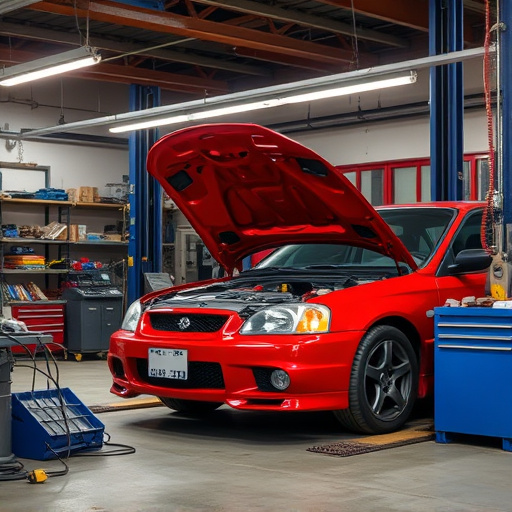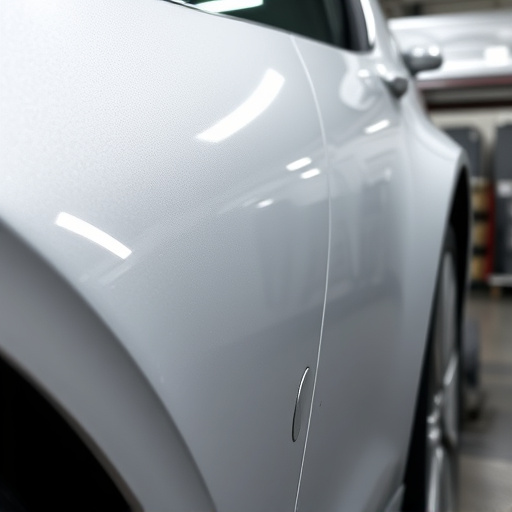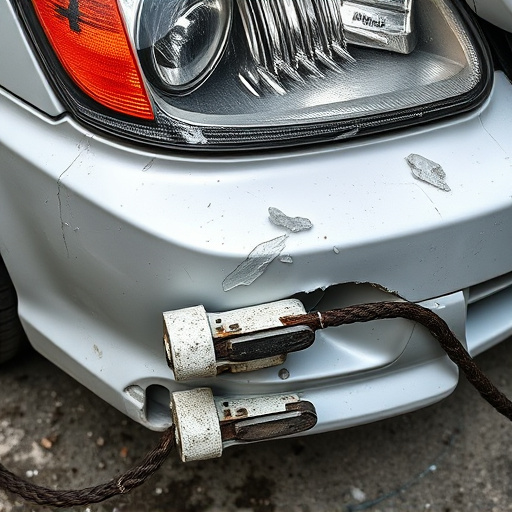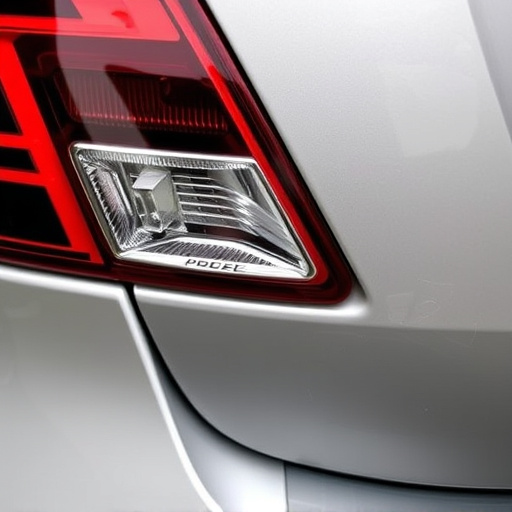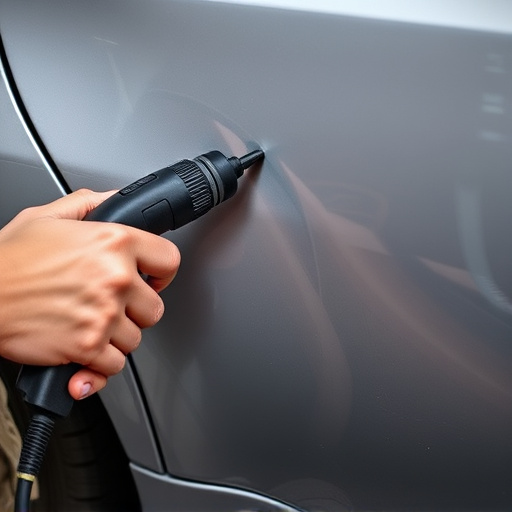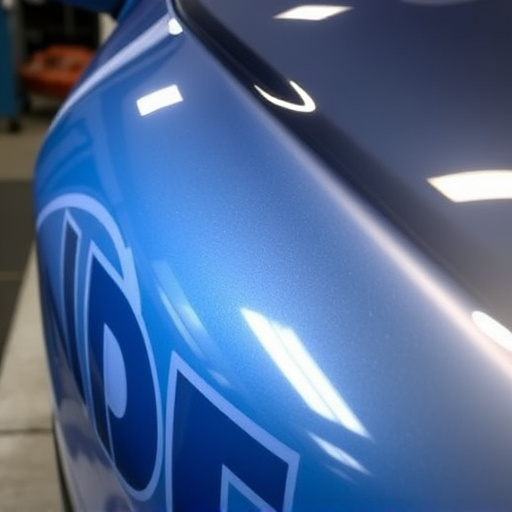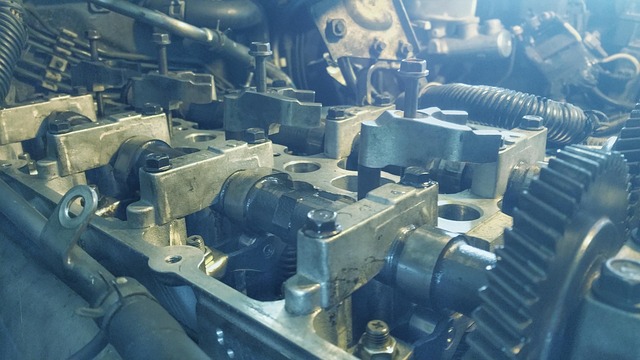Modern innovations have revolutionized the dent removal process, making car dent repair more efficient and cost-effective with advanced tools like pneumatic tools, laser technology, and automated paint systems. Techniques like Paintless Dent Repair (PDR) offer quicker, cleaner repairs matching original paint jobs, ideal for minor damages. Emerging technologies like robotic systems and AI predict damage outcomes, promising faster, more efficient dent removal in the future, benefiting both car owners and service providers.
“Discover the latest advancements in dent removal with our comprehensive guide. Modern innovations have transformed dental care, offering more efficient and minimally invasive procedures. From cutting-edge tools to emerging technologies, this article explores the future of dent removal. Learn about modern techniques that prioritize patient comfort and recovery time. We delve into non-invasive approaches, ensuring disruptive treatments are a thing of the past. Get ready to explore the exciting possibilities shaping dental care today.”
- Modern Tools and Techniques for Efficient Dent Removal
- Non-Invasive Approaches: Minimally Disruptive Treatments
- Future Trends: Emerging Technologies in Dental Care
Modern Tools and Techniques for Efficient Dent Removal

In today’s digital era, modern innovations have revolutionized the dent removal process, making car dent repair more efficient and accessible than ever before. Advanced tools like pneumatic tools, laser technology, and automated paint systems have transformed traditional car dent repair methods. These tools offer precise cuts, reducing damage to surrounding panels and minimizing material waste. Laser technology, for instance, can quickly heat and shrink the dented area, pushing it back into place with minimal force.
Additionally, modern techniques emphasize the importance of specialized training and certified car repair services. Professionals now employ methods like PDR (Paintless Dent Repair), which avoids repainting by gently pushing out dents from behind the panel. This not only conserves time and money but also ensures a seamless finish that matches the car’s original paint job, making it ideal for minor fender bender damages. These advancements have made dent removal faster, cleaner, and more cost-effective for both repair shops and vehicle owners.
Non-Invasive Approaches: Minimally Disruptive Treatments

In recent years, modern innovations have transformed the dent removal process into a more non-invasive and minimally disruptive approach. These advancements offer a significant departure from traditional methods that often left visible scars or required extensive repair. With precision engineering and advanced materials, today’s body shop services employ state-of-the-art equipment to target and eliminate dents with remarkable accuracy. One such innovation is the use of air-based technology, which gently pushes against the dented area, gradually realigning the panel without the need for excessive force or metal manipulation.
This shift towards non-invasive treatments not only ensures a smoother, more aesthetic restoration but also reduces the time and cost associated with traditional dent removal. Auto body services now offer advanced techniques such as paintless dent repair (PDR), where technicians expertly manipulate the vehicle’s panel from the inside out, preserving the original factory finish. Even minor dents, once considered challenging to fix without leaving a trace, can now be repaired efficiently, maintaining the vehicle’s overall appearance and value. These modern innovations in dent removal cater to both auto body services and specialized bumper repair, providing customers with efficient, effective, and virtually invisible solutions.
Future Trends: Emerging Technologies in Dental Care

The future of dent removal is set to be transformed by emerging technologies, much like we’ve seen in automotive repair and fleet maintenance services. Advanced robotic systems, for instance, are becoming increasingly sophisticated, enabling precise and consistent dent repair, much like an expert technician would perform on vehicle bodywork. These robots can handle intricate shapes and curves with remarkable accuracy, promising faster and more efficient repairs.
Additionally, artificial intelligence (AI) is playing a significant role in enhancing the dent removal process. AI-powered systems can analyze damage patterns and predict repair outcomes, streamlining workflows and reducing human error. This technology shares parallels with fleet repair services where predictive maintenance is used to optimize vehicle upkeep. As these innovations mature, they will not only benefit individual car owners but also contribute to more streamlined and cost-effective dent removal processes across the industry.
The modern dent removal process has witnessed significant advancements, transitioning from traditional methods to innovative techniques that prioritize efficiency and patient comfort. From sophisticated tools to non-invasive treatments, these developments offer faster recovery times and improved outcomes. As we look towards the future, emerging technologies in dental care promise even more transformative solutions, setting the stage for a revolution in the way we address dental imperfections. By embracing these modern innovations, dentists can deliver exceptional care that enhances both function and aesthetics for patients worldwide.
